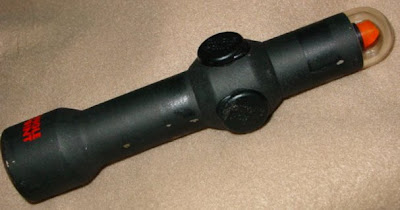Gun safety's Four Rules: Don't get your name in the newspapers
I do something that is perhaps peculiar. When I read the news I look for stories about gun accidents. Each time I find one, if the reporting is clear at all, I can figure out which gun safety rule was violated, or which rules, for often it's not just one.
Colonel Cooper's Four Rules of Gun Safety are the distillation of what you need to know, a short simple set of precepts that anyone can remember. Cooper, as likely you know already, revolutionized shooter training in the last century by clearly stipulating, step by step, the skills needed to shoot effectively. For example, he identified five steps in drawing and leveling a pistol, then he coached people until the gun came out and got trained on the target the same way every time. He turned the same analytical skills to the question of how to handle a firearm safely. Here's the thing: In every accidental shooting for which I've gotten a clear news account, it is clear that at least one of his four safety rules was ignored.
Therefore I am a big fan of the Four Rules and promote them when I get the chance. I think that each shooter should know them by heart. If he forgets them, he should lock away his gun until he refreshes his memory.
1. All guns are always loaded! Some have criticized Cooper's phrasing of this rule, but his intent was to be as emphatic as possible. Treat every gun as a loaded gun (the denotative sense intended) and you will never have to whine, "But I didn't know it was loaded." Of course you did, because all guns are always loaded. That is the way you must treat guns, or they may do things you do not expect.
2. Never let the muzzle cover anything you are not willing to destroy. This stands to reason. The purpose of a gun is to destroy what it is directed at. Negligently pointing your gun at things and people that don't need shooting is a bad business.
3. Keep your finger OFF the trigger until your sights are ON the target. There is no need to shoot if you have not lined up on the target, thus no need to have your finger on the trigger. There is every reason to keep your finger off it. A great many accidents, perhaps the majority of them, involve violation of this simple and obvious rule.
4. Be sure of your target and what is beyond it. Always positively identify what you are shooting at. Mistaken shootings occur, but should not. A hunter has no business shooting a human under the misapprehension that he is shooting an animal. A householder has no reason for shooting a family member who arrives at home late and unexpected; use a flashlight to see who it is. The "what is beyond" part of the rule concerns the downrange danger posed by your projectile and the question of where the bullet will stop. You do not want your bullet to do harm elsewhere than you intend, by passing alongside or through your target, then sailing on its way to harm someone in the background.
As a mnemonic to help me remember the rules, I use "LS/MFT," a catchphrase from my youth. Only now it means, "LOADED, STUPID! Muzzle. Finger. Target." Remember the rules in any way you like, but remember them. Then I won't be reading about you in the newspapers.


One of the beauties of the Four Rules is that you have to break more than one at a time in order to accidentally perforate someone.
ReplyDeleteGenerally I agree. But what shall we make of a case like this? The cops decide to shoot someone, know their guns are loaded, their muzzles are covering their man, their sights are sort of on the target--they shoot, and innocents downrange are hit. Rule four seems chiefly involved. There have been several such incidents; here's one: http://shootery.blogspot.com/2011/09/rule-four-in-san-francisco.html
DeleteWhile I suppose rules two and three could be invoked after the fact--their muzzles really were covering things other than the bad guy and their sights can't have been on target perfectly--rule four seems principally involved here.
If you have a gun, then you must follow these rules by heart. I personally prefer the gun safety classes. The nice part of the gun safety class is they teach all aspects of shooting, including how to clean and store a pistol/rifle/shotgun as well as recommendations on what you should use or buy for yourself. I have done my gun safety class from Boston firearms training center and it is very useful.
ReplyDeleteHelloo mate great blog post
ReplyDelete